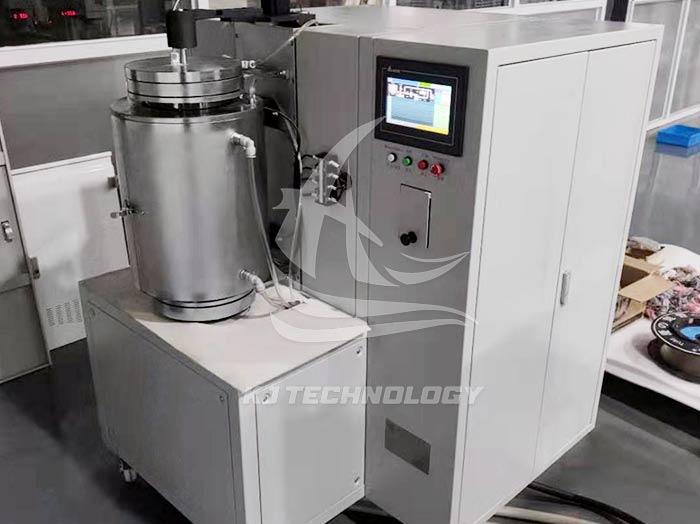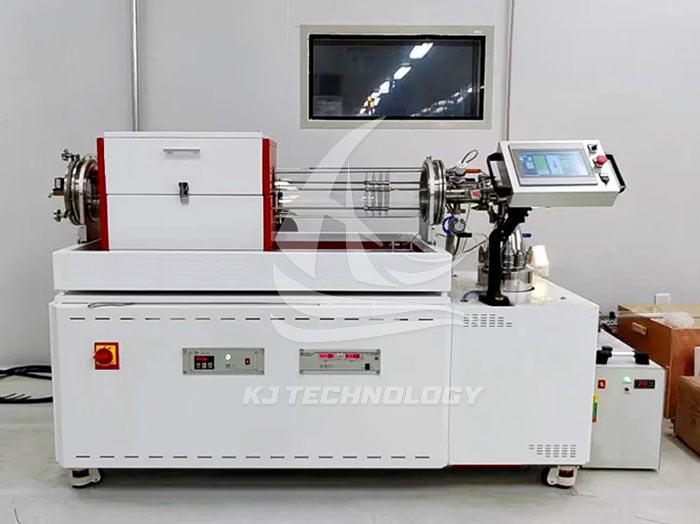Electric heating vacuum annealing furnace
 11-12-2025 Author: KJ technology
11-12-2025 Author: KJ technology
Electric heating vacuum annealing furnace is a heat treatment equipment that combines vacuum technology and electric heating method, widely used in fields such as metal processing, semiconductor manufacturing, and glass technology. The following provides a detailed introduction from four aspects: working principle, structural composition, application fields, and operational precautions:
working principle
The electric heating vacuum annealing furnace creates a high vacuum environment to reduce the contact between materials and gases such as oxygen and nitrogen during the annealing process, effectively avoiding oxidation and pollution. Its working principle is based on the scientific principles of heat transfer and material phase transition. In the furnace, the material is uniformly heated to a predetermined temperature through resistance heating. At high temperatures, the atoms inside the material gain sufficient energy to undergo microstructural changes such as diffusion and recombination, thereby eliminating residual stresses inside the material, improving its crystal structure, and enhancing its plasticity and toughness.
structural composition
Electric heating vacuum annealing furnace usually consists of the following main parts:
Furnace body: The main structure of the equipment, with good insulation and sealing performance to maintain the vacuum degree and temperature inside the furnace.
Heating system: Generally, resistance heating is used to ensure uniform heating of the material. Resistance heating elements (such as resistance wires or resistance furnace cores) generate heat through current to heat materials.
Vacuum system: responsible for extracting gas from the furnace and creating a high vacuum environment. Vacuum systems typically include components such as vacuum pumps, vacuum valves, and vacuum measuring instruments.
Cooling system: used for rapid cooling of materials after annealing process. The cooling system can be either water-cooled or air-cooled, depending on the design and application requirements of the equipment.
Control system: Achieve precise control of the annealing process. The control system usually includes components such as temperature controller, time controller, and automation operation interface, which can set heating, insulation, and cooling programs, and monitor parameters such as temperature and vacuum degree inside the furnace.
Application field
Electric heating vacuum annealing furnaces have wide applications in various industrial fields, mainly including:
Metal processing: used to eliminate defects such as pores, oxides, and carbides inside metal materials, and improve the strength, hardness, and corrosion resistance of metal materials. Suitable for annealing treatment of materials such as stainless steel, alloy steel, titanium alloy, etc.
Semiconductor manufacturing: In semiconductor manufacturing, electrically heated vacuum annealing furnaces play an important role in heat treating semiconductor materials such as transistors and integrated circuits. Vacuum environment can effectively reduce the impurity content in materials and improve the conductivity and stability of semiconductor devices.
Glass technology: Vacuum annealing can make the surface of glass products smoother and more transparent, reduce internal stress, and improve the strength and heat resistance of the products. Widely used in the manufacturing of optical lenses, glassware, and other products.
Operation precautions
When using an electric heating vacuum annealing furnace, the following points should be noted to ensure the safe operation and annealing effect of the equipment:
Preparation before opening the furnace:
Put the materials into the furnace and close the furnace door.
Check if there is any looseness in the wire ends of each circuit, and if so, repair and tighten them first.
Open the compressed air main valve and water supply main valve before the pneumatic triple component to ensure smooth air and water circuits.
Heating and insulation:
Set a reasonable heating rate and insulation temperature to avoid material cracking or deformation due to excessive thermal stress.
Regularly check the electrical connections of the temperature control system to ensure proper functioning of the heating elements.
Cooling and shutdown:
After the insulation time meets the requirements, choose furnace cooling or controlled cooling according to the process requirements.
During the cooling process, maintain the normal operation of the vacuum system and cooling system to avoid material cracking due to rapid cooling.
When shutting down the furnace, first turn off the heating system, then turn off the vacuum system, gas path, and water path in sequence.
Security protection:
Operators are required to wear personal protective equipment such as heat-resistant gloves and protective goggles to avoid burns or eye injuries.
Regularly check the grounding status of equipment to ensure electrical safety.
During the operation of the equipment, it is strictly prohibited to open the furnace door or perform other operations that may affect the vacuum degree and temperature.








